Editor’s note: This post is part of our weekly In the NVIDIA Studio series, which celebrates featured artists, offers creative tips and tricks, and demonstrates how NVIDIA Studio technology improves creative workflows.
3D artist Milan Dey finds inspiration in games, movies, comics and pop culture. He drew from all of the above when creating a stunning 3D scene of Mayan ruins, The Hidden Temple of Itzamná, this week In the NVIDIA Studio.
“One evening, I was playing an adventure game and wanted to replicate the scene,” Milan said. “But I wanted my version to have a heavy Mayan influence.”
Milan sought vast, detailed architecture and carved rocks that look like they’ve stood with pride for centuries, similar to what can be seen in the Indiana Jones movies. The artist’s goals for his scene were to portray mother nature giving humanity a reminder that she is the greatest, to kick off with a grand introduction shot with light falling directly on the camera lens to create negative spaces in the frame, and to evoke that wild, wet smell of greens.
Below, Milan outlines his creative workflow, which combines tenacity with technical ability.
And for more inspiration, check out the NVIDIA Studio #GameArtChallenge reel, which includes highlights from our video-game-themed #GameArtChallenge entries.
It Belongs in a Museum
First things first, Milan gathers reference material. For this scene, the artist spent an afternoon capturing hundreds of screenshots and walkthrough videos of the game. He spent the next day on Artstation and Adobe Behance gathering visuals and sorting out projects of ruins.
Next, Milan browsed the Epic Games marketplace, which offers an extensive collection of assets for Unreal Engine creators.
“It crossed my mind that Aztec and Inca cultures are a great choice for a ruins environment,” said Milan. “Tropical settings have a variety of vegetation, whereas caves are deep enough to create their own biology and ecosystem.” With the assets in place, Milan organized them by level to create a 3D palette.
He then began with the initial blockout to prototype, test and adjust the foundational scene elements in Unreal Engine. The artist tested scene basics, replacing blocks with polished assets and applying lighting. He didn’t add anything fancy yet — just a single source of light to mimic normal daylight.
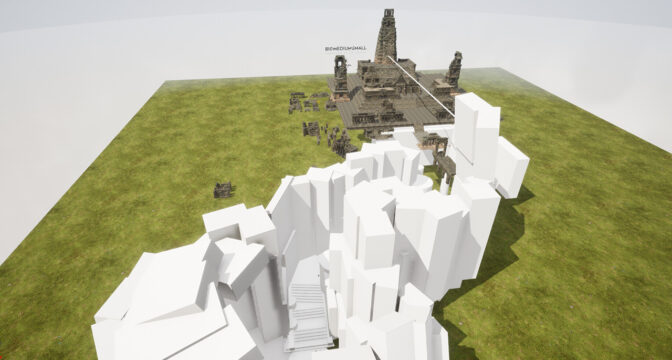
Milan then searched for the best possible cave rocks and rock walls, with Quixel Megascans delivering the goods. Milan revisited the blocking process with the temple courtyard, placing cameras in multiple positions after initial asset placements. Next came the heavy task of adding vegetation and greens to the stone walls.
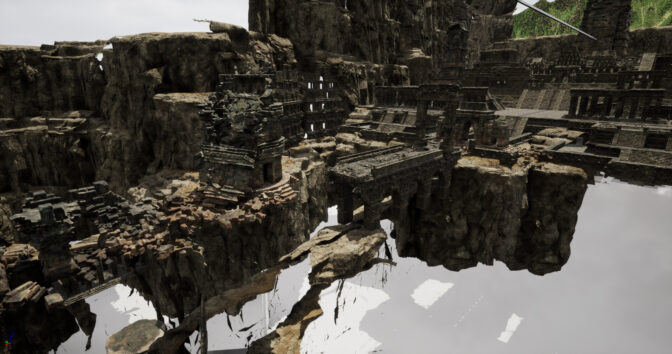
“I put big patches of moss decals all around the walls, which gives a realistic look and feel,” Milan said. “Placing large- and medium-sized trees filled in a substantial part of the environment without using many resources.”
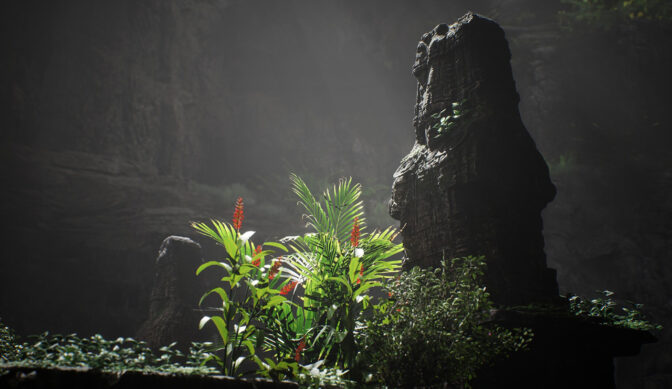
As they say, the devil is in the details, Milan said.
“It’s very easy to get carried away with foliage painting and get lost in the depths of the cave,” the artist added. It took him another three days to fill in the smaller vegetation: shrubs, vines, plants, grass and even more moss.
The scene was starting to become staggeringly large, Milan said, but his ASUS ROG Strix Scar 15 NVIDIA Studio laptop was up to the task. His GeForce RTX 3080 GPU enabled RTX-accelerated rendering for high-fidelity, interactive visualization of his large 3D environment.
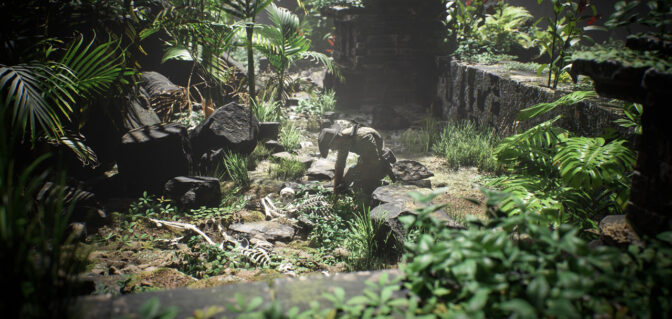
NVIDIA DLSS technology increased interactivity of the viewport by using AI to upscale frames rendered at lower resolution while retaining photorealistic detail.
“It’s simple: NVIDIA nailed ray tracing.” Milan said. “And Unreal Engine works best with NVIDIA and GeForce RTX graphics cards.”
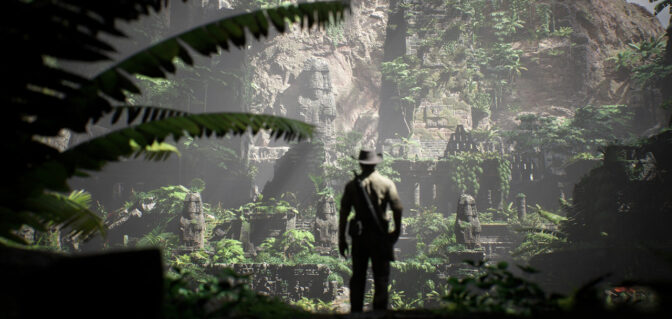
Milan lit his scene with the HDRI digital image format to enhance the visuals and save file space, adding select directional lighting with exponential height fog. This created more density in low places of the map and less density in high places, adding further realism and depth.
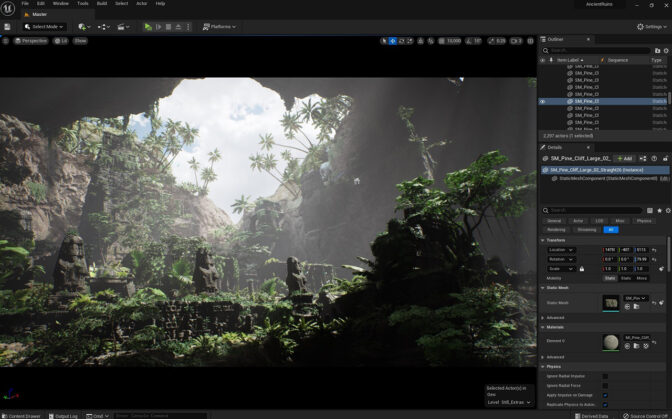
“It’s wild what you can do with a GeForce RTX GPU — using ray tracing or Lumen, the global illumination calculation is instant, when it used to take hours. What a time to be alive!” — Milan Dey
The artist doesn’t take these leaps in technology for granted, he said. “I’m from an era where we were required to do manual bouncing,” Dey said. “It’s obsolete now and Lumen is incredible.”
Lumen is Unreal Engine 5’s fully dynamic global illumination and reflections system that brings realistic lighting to scenes.
Milan reviewed each camera angle and made custom lighting adjustments, sometimes removing or replacing vegetation to make them pop with the lighting. He also added free assets from Sketchfab and special water effects to give the fountain an “eternity” vibe, he said.
With the scene complete, Milan quickly exported final renders thanks to his RTX GPU. “Art is the expression of human beings,” he stressed. “It demands understanding and attention.
To his past self or someone at the beginning of their creative journey, Milan would advise, “Keep an open mind and be teachable.”

Check out Milan’s portfolio on Instagram.
Follow NVIDIA Studio on Instagram, Twitter and Facebook. Access tutorials on the Studio YouTube channel and get updates directly in your inbox by subscribing to the Studio newsletter.
